THE GAFFA TAPES
25 Sep 2023
Notes on an Interview
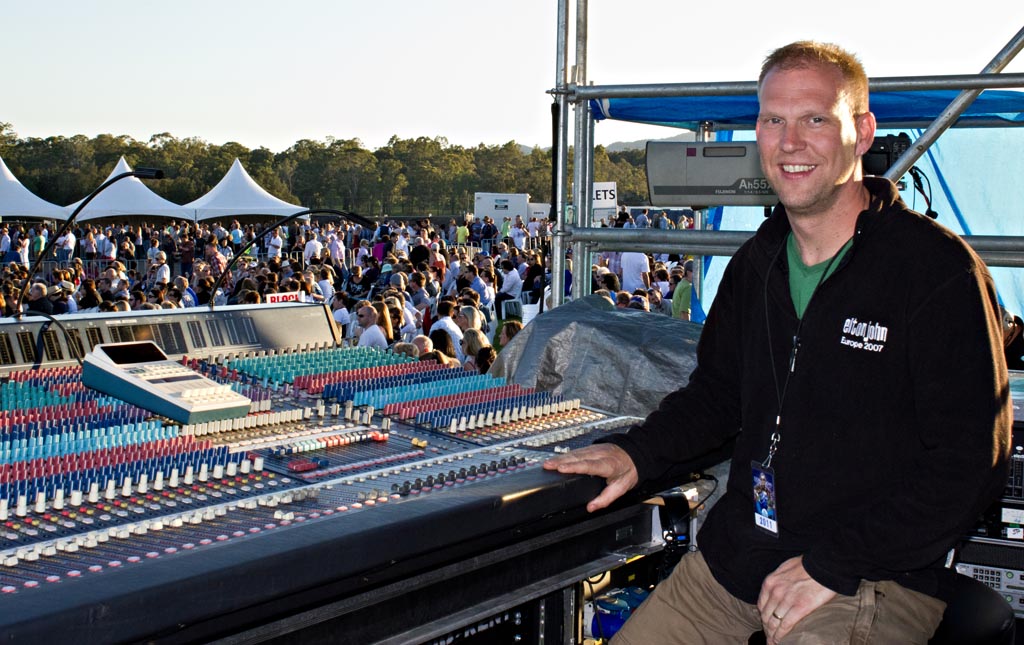
Subscribe to CX E-News
Snippets from the archives of a bygone era
Successful interviews have long been considered the Holy Grail of journalism, especially in the music industry. The archaic art of penning notes for the print media required visually clear, concise, organised and structured notes that were easy to transcribe. Given that I can barely read my own writing I could never have accurately documented interviews without a tape or digital recorder for face- to-face interviews, or a telephone interface for recording landline conversations onto a DAW. But I do know a senior journalist who only takes longhand notes during her interviews, consistently eschewing any form of taped or digital recording.
As fate ordained it, at age 15 I attended shorthand and typing classes two nights per week at the behest of the NSW Government Railways. These classes were mandated for junior clerks who were always typing something, but very few of us had any use for shorthand. I could never explain my fixation with typing, which saw me banging away at my desk during lunch breaks to the chagrin of the senior clerical workers around me who craved peace and quiet whilst they sat eating their sandwiches and drinking tea.
Some 20 years later in the ’80s I saw my first computer on display behind roped barriers at a Dick Smith store. I became mesmerised by the fact that it featured the exact same QWERTY keyboard as a conventional typewriter. In somewhat of a trance, I entered the roped zone and began touch-typing at speed. Then, noticing a large audience had mistaken me for some sort of computer programmer, I made a hurried exit. The 100-year-old QWERTY keyboard had made its transition into the digital world, and although there were several clunky portable analogue tape recorders on the market, it would be many years before the digital pocket recorder would emerge in mainstream use.
In 2003, whilst reporting for Broadcast Engineering News magazine at the height of the digital revolution, I blundered into purchasing an analogue microcassette pocket recorder for my first broadcast interview, which was with Peter Gough who was the retiring Chief Operating Officer of WIN Television. We were only a few minutes into the interview, discussing how he had steered WIN Television from the days of monochrome television into the digital age, when the microcassette recorder shut down with a very loud click. Gough stopped mid-sentence and an embarrassing pause ensued while the dissident little pocket recorder sat silently, as if protesting the impending demise of analogue tape.
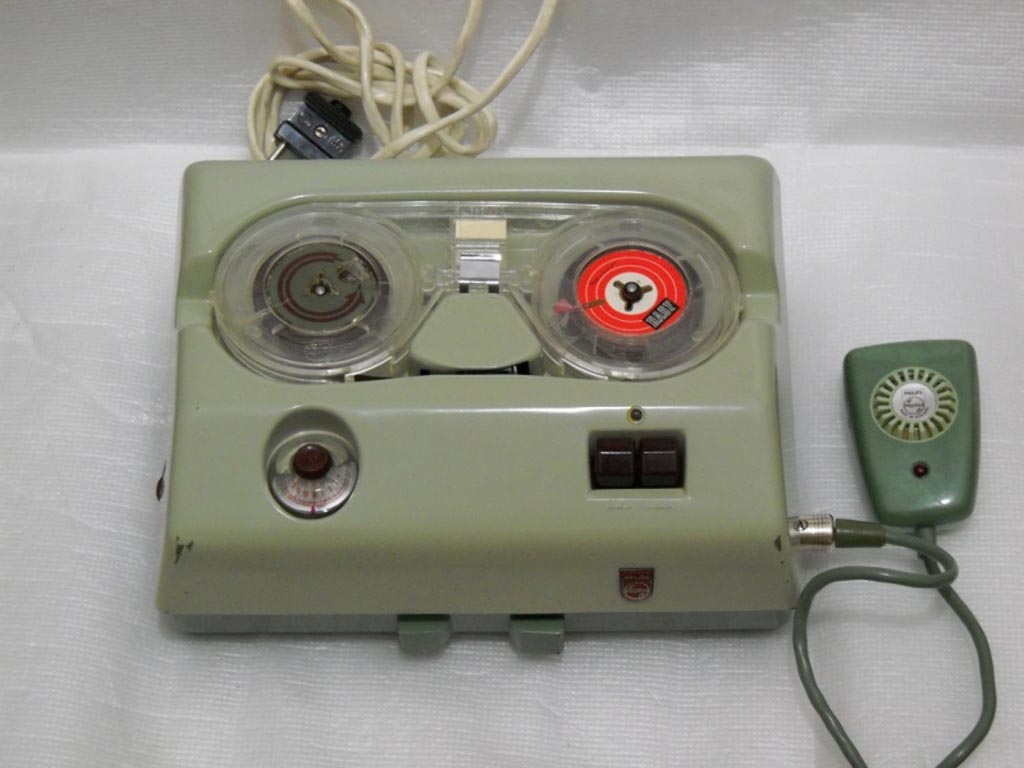
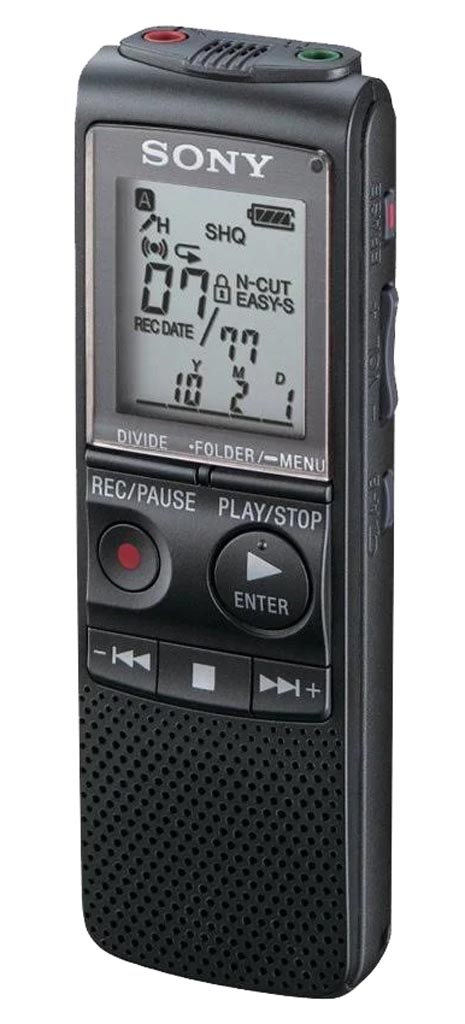
Sony was soon to release a range of IC digital Notetakers, and I became the proud owner of the ICD-PX820 digital voice recorder with 2GB built-In flash memory and 535 hours of MP3 recording time that could be dumped via USB onto a computer.
Concert technicians rarely have time for on- the-spot interviews but there are exceptions. Nonetheless, the little Sony digital voice recorder was always useful in grabbing a few sound bites, a phone number and other contact details for an interview at a later time. Sometimes I’d corner a technician who had a few spare moments before a show, but I still had much to learn about setting up integral interviews at concerts.
The most powerful weapon in anyone’s bag of tricks is the photo pass, which will open a lot of doors for interviews; it’s not quite the Wayne’s World backstage pass with access to all areas, but it’s a start. Photo passes aren’t easy to get. You have to be authorised by the print media or other media organisation you represent, along with signing a couple of waivers. But even with that little photo pass ID swinging off its lanyard, plus a sticker usually adhered to your jacket, there is no guarantee that either talent or technician will talk to you.
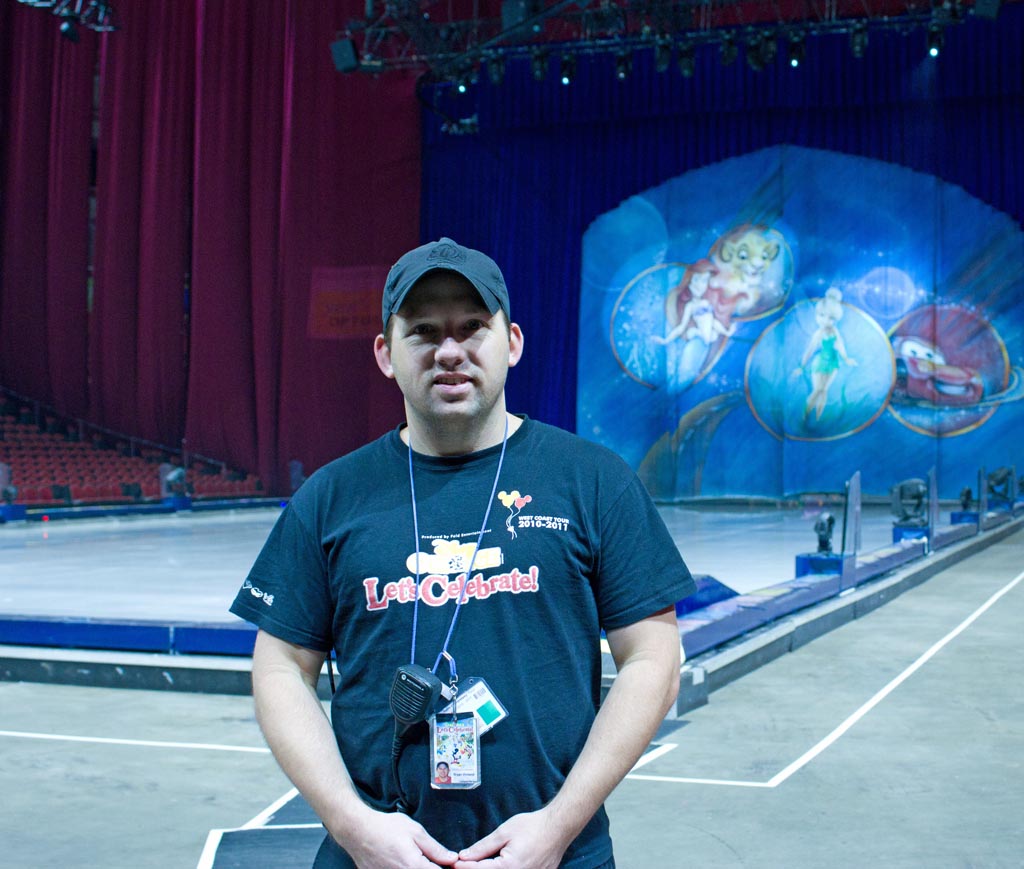
Numerous telephone calls and emails that included lots of begging and pleading got me full access to the 2011 Disney on Ice concert at Acer Arena, Sydney Olympic Park, where I was the only photographic journalist there, and given full access to all the technicians and management. My little Sony Notetaker was running hot recording interviews with the audio and lighting engineers, the sound effects technician, carpenters, the Stage Manager and the Company Manager. Coincidentally, the next day was the combined SMPTE and Entech exhibitions in Sydney where the Notetaker was again kept busy with on-the-spot interviews.
It wasn’t so easy at the October 2011 Meat Loaf concert at Bimbadgen Estate Winery, Hunter Valley, where access to the bio box that housed the concert technicians had been sealed off by security. As I prowled the exterior, I noticed an audio engineer tweaking knobs on the mixing console.
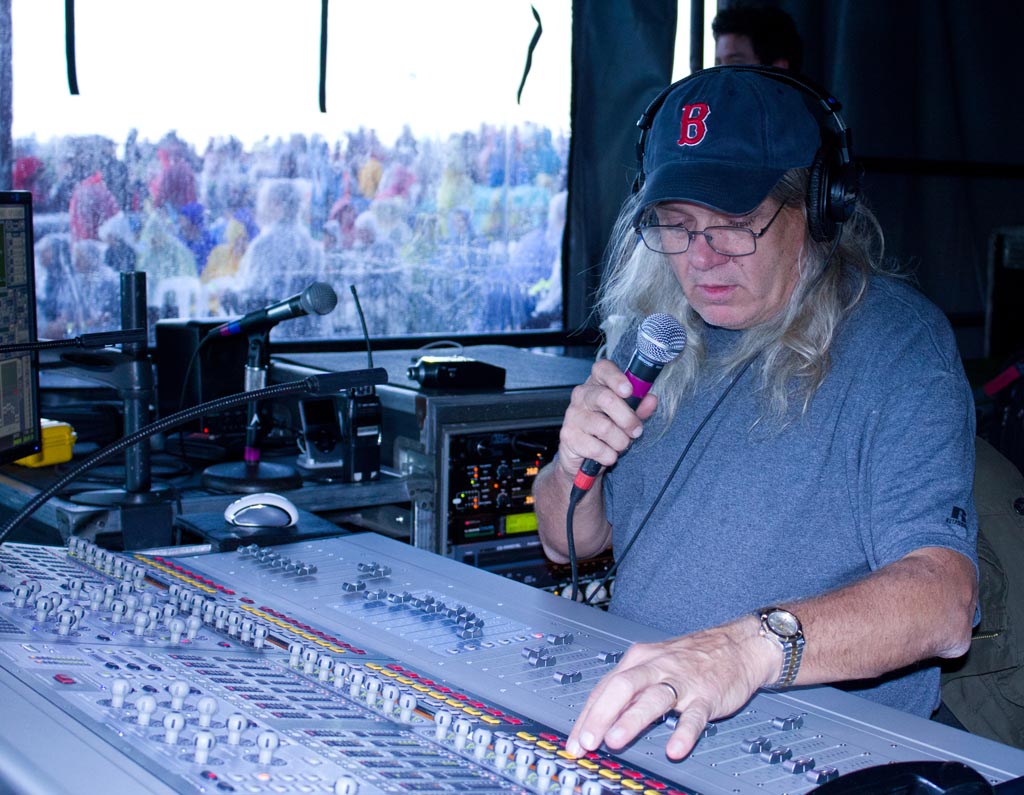
“Hi, I’m reporting for CX Magazine on the technicians for the show. Can I have a photo?” This was George Wehrlin, Meat Loaf’s sound engineer of 22 years. We chatted briefly before he invited me into the bio box to take his picture. George was one of the nicest guys I’ve ever met on an international tour. He took my details and rang me a couple of days later from the Sydney Entertainment Centre during load-in and he took the time to give me a comprehensive interview, which I dubbed onto a DAW via a telephone interface. The article is available in the CX archives (CX65 Nov 2011).
I knew my stalking the bio box technique would need a little more refining for the next concert. So, prior to the December 2011 Elton John concert at Hope Estate winery, also in the Hunter, I took to the Internet to see who would be mixing sound. Matt Herr came up as Elton John’s FOH sound engineer. Knowing that at any given time several technicians can be milling in the bio box, including the lighting techs, systems engineers and crew from the support band, I studied several photos of Herr to impregnate his image into my brain.
The Elton John concert had some of the strictest security I had ever experienced. Despite having a photo pass, I was stopped at the gate where they wanted to confiscate my SLR camera and lenses. I had to call Elton John’s Australian Publicist, Bruce Pollack, to escort me into the venue. He took me to a roped area outside the photo pit where I was told to remain under his watchful eye with the other photographers until the commencement of the performance; and I was denied permission to walk to the bio box to interview the technicians.
After pleading with Pollack on the grounds that if I didn’t get a technical interview I wouldn’t have a story, he replied, “They won’t talk to you anyway.” Of course, he knew that the bio box entrance was guarded by security.
“Ok, how about if I promise that I’ll just politely ask once, and if I’m denied I’ll come straight back?”
“Ok, but you’re wasting your time,” he added bluntly.
I didn’t go anywhere near security at the front of the bio box. Instead, I skirted the perimeter looking for a match to my memorised image of Matt Herr, eventually spotting him through the side curtains. I knew from years of working in the industry that people are always bringing technicians paraphernalia ranging from equipment and messages to coffee, and I had my prop, which was a copy of CX Magazine in my backpack.

“Hey, Matty,” I cheekily called out waiving the CX copy, “I’ve got your magazine.”
Matt Herr came over and accepted my offering. As he glanced at the magazine I added, “I’m covering the concert technicians for CX Magazine. Can I get a photo?” He gave me a wry smile and then invited me into the bio box for the shot, and I was also able to roll my Sony Notetaker for a few audio grabs. Matt Herr was another of the nice guys I’ve met in the industry, and he gave me his contact details for a future interview, which transpired a few days later (CX67 Feb. 2012).
Over the past decade I’ve just about worn out the anecdote about being shunned by Rod Stewart’s Danish-born sound engineer, Lars Brogaard, at the 2012 Hope Estate concert. Here, pit photography was banned, and I was restricted to the bio box accompanied by a security guard for the entire concert. Although shooting from the soundboard is not ideal for concert photography, it positioned me only a few metres from Stewart’s sound engineer.
Prior to the commencement of the show the security guard allowed me to approach him to ask for a photograph and contacts for a later interview. “No,” was Brogaard’s one word reply to both the photograph and the interview.
Subscribe
Published monthly since 1991, our famous AV industry magazine is free for download or pay for print. Subscribers also receive CX News, our free weekly email with the latest industry news and jobs.




